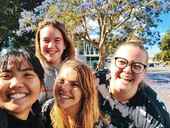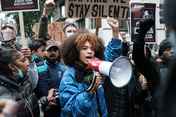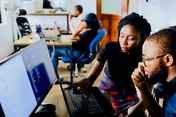Get clear on WHY
Something has brought you to this point – ready to take on a significant project to benefit the children and youth of your community. Perhaps you already work with or for young people and realized you do not have enough of the right kind of information to make or influence the best decisions. Maybe an event or series of events highlighted a challenge or opportunity to be addressed. It could be a growing realization that the best way to build a more inclusive and resilient society is to pay more attention to how its youngest members are faring and to hear directly from them. Or you might be a young person who wants a different way to be heard and better opportunities to influence community life.
Whatever brought you here, it is important to take the time now to be clear about why you might use the Community Child and Youth Well-being Survey, and what it is that you want to accomplish as a result. There will be times when referring to the “why” and the “what” will guide you toward the next best step. You also need to compellingly summarize the goal driving the project to secure the support of partners, stakeholders and participants, and to help keep everyone aligned as you go forward.
There are different ways to go about this. However, the result is always going to be better when you involve more people upfront – especially young people. One way to get everyone on the same page is to hold a facilitated stakeholder meeting to create a shared vision and goal.
Invite a select group of stakeholders including young people to discuss an exciting opportunity related to community youth well-being. Plan for a group of 10 to 15 participants (you can invite approximately 30 per cent more). Let them know they are part of a select group and reassure them that you are only looking for advice at this time.
Send an invitation and ask them to RSVP or register. Work with youth to plan the meeting and invite other youth. Provide a brief description of the project and links to other materials that might help them prepare, such as a backgrounder on the survey, a news article highlighting another community’s experience, an FAQ and a link to the survey portal.
See Appendices for a sample backgrounder and an FAQ.
When thinking about who to invite, ask yourself about what groups would benefit most from the data once the survey is complete. Whose voice is essential early in the process to ensure the project’s inclusion, credibility and impact? Young people are at the top of the list, with diversity reflecting your community. Members of Indigenous or racialized communities and groups already active in child and youth well-being are obvious stakeholders. Whose support is important if the project is to proceed, such as local government, social planning tables, leaders of youth organizations, health networks, school trustees, youth leaders such as coaches, and foundations? You should also include any staff or volunteers who will be part of the project’s management team.
.jpg)
External facilitators can work with you to design the best format to share information about the Community Child and Youth Well-being Survey, followed by shaping a vision and goal statement. The session may also yield ideas of who to invite to form the Steering Committee.
See Appendix for a sample kick-off meeting format.





































